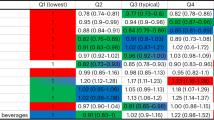Abstract
THE camel's ability to live without water for long periods is outstanding1,2,4,6. It can lose about 30 per cent of its body-weight during dehydration in the desert and still move about12. A dehydrated camel can regain its losses of water (about 30 gallons) in about 10 min and resume its normal appearance; despite the large flow of water into the bloodstream its erythrocytes are not hæmolysed. In human beings the entry of 600 ml. of water into the circulation will produce hæmoglobinuria11. It is also known that cattle (in hot environments) deprived of water and then given large amounts of it may develop hæmoglobinuria. This, however, has never been observed in camels, according to statements made by camel raisers.
This is a preview of subscription content, access via your institution
Access options
Subscribe to this journal
Receive 51 print issues and online access
$199.00 per year
only $3.90 per issue
Buy this article
- Purchase on Springer Link
- Instant access to full article PDF
Prices may be subject to local taxes which are calculated during checkout
Similar content being viewed by others
References
Cristol, P., and Benerech, C., Arch. Intern. Physiol., 50, 148 (1946).
Guest, G. M., and Wing, M., J. Lab. and Clin. Med., 24, 850 (1939).
Katchalsky, A., Kedem, O., Klibansky, G., and DeVries, A., Flow Properties of Blood, 155 (Pergamon Press, Oxford, 1960).
MacFarlane, W. V., Morris, R. J. H., and Howard, Beth, Nature, 197, 270 (1963).
Orskov, S. L., Acta physiol. Scand., 12, 202 (1946).
Perk, K., and Lobel, K., Refuah Vet., 18, 168 (1961).
Perk, K., Horth, I., and Perry, A., Refuah Vet., 20, 1 (1963).
Perk, K., and Danon, D. (in the press).
Ponder, E., Hemolysis and Related Phenomena (Grune and Stratton, New York, 1948).
Ponder, E., Protoplasmatologia, 10/2 (1955).
Rath, G. E., Blood, 8, 1099 (1953).
Schmidt-Nielsen, B., Schmidt-Nielsen, K., Houpt, T. R., and Jarnum, S. A., Amer. J. Physiol., 185, 185 (1956).
Author information
Authors and Affiliations
Rights and permissions
About this article
Cite this article
PERK, K. The Camel's Erythrocyte. Nature 200, 272–273 (1963). https://doi.org/10.1038/200272a0
Issue Date:
DOI: https://doi.org/10.1038/200272a0
This article is cited by
-
Hematologic parameters in female alpacas during age progression: a retrospective study
Scientific Reports (2024)
-
Comparative NMR studies of diffusional water permeability of red blood cells from different species. X. Camel (Camelus dromedarius) and alpaca (Lama pacos)
Comparative Haematology International (1999)
-
The band 3-rich membrane of llama erythrocytes: Studies on cell shape and the organization of membrane proteins
The Journal of Membrane Biology (1983)
Comments
By submitting a comment you agree to abide by our Terms and Community Guidelines. If you find something abusive or that does not comply with our terms or guidelines please flag it as inappropriate.



